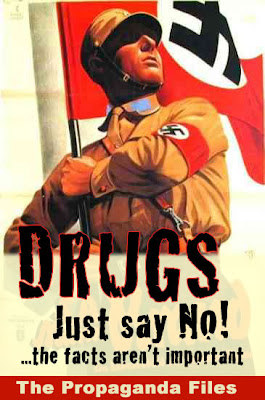 Health education can be tricky. There’s many factors to consider when implementing a public health campaign. Demographic of the target audience and the right tone when addressing this audience is key. Oftentimes, especially with campaigns geared at youth and drug use things get topsy-turvy. The wrong tone can mean an ineffective, often counterproductive campaign. Anti-oppression should be a core value of all education. Judgement and/or discrimination needs to be avoided at all costs. Education is key and honesty goes a long way. This seems pretty simple and straight-forward, right?
Health education can be tricky. There’s many factors to consider when implementing a public health campaign. Demographic of the target audience and the right tone when addressing this audience is key. Oftentimes, especially with campaigns geared at youth and drug use things get topsy-turvy. The wrong tone can mean an ineffective, often counterproductive campaign. Anti-oppression should be a core value of all education. Judgement and/or discrimination needs to be avoided at all costs. Education is key and honesty goes a long way. This seems pretty simple and straight-forward, right?
Unfortunately, many health campaigns geared at youth do the exact opposite. Many drug prevention efforts rely on scare tactics and abstinence-based “Just Say No” approaches. Youth who use drugs will do so regardless of whether society shakes the finger at them or not. Things aren’t white and black, people partake in different risks therefore health education should cater to all sorts of individuals. People who use drugs get shunned, marginalized, pushed out of society and left feeling guilty about their lifestyle. Health education should focus on the education rather than on trying to scare people straight. We should be teaching people about the risks associated with different activities, and encourage critical thinking in order to empower individuals to make informed choices that affect their bodies and minds.
There is an unspoken tension in the social service sector between substance prevention and harm reduction tactics. This is counterproductive. Harm reduction’s main mandate is to lower risk levels of current drug users, as well as getting individuals into and familiarized with the healthcare system and providing referrals to other health services including recovery upon request. The main mandate for prevention is to minimize drug misuse/abuse within society and thus improve the overall health of our communities. These two philosophies to healthcare can and should be adjacent.
However, many prevention campaigns still continue to use scare tactics and demonize drug use and drug users. Instead, prevention should focus on recovery services for those who are ready and willing to get help. Not every person who uses drugs is an addict and society can’t impose the same standards for everyone. The best way to identify a problematic drug habit is by the individual after proactive self-reflection. You can’t help someone who doesn’t want help and labelling people as “addicts” or “junkies” further oppresses those who use drugs. Harm reduction should be seen as secondary prevention. It is crucial to provide healthcare services for individuals who use drugs since oftentimes the ritual or way of consuming certain substances is far riskier and detrimental to the individual and society’s overall health than the drug itself. A great example of this is sharing needles, straws, pipes and works. All these activities put individuals at risk of transmitting a virus that is a far greater risk than the drugs being used.
We need to be progressive with health education not retrogressive. I encourage you to think twice before bashing crucial, essential and much needed harm reduction services and when implementing prevention campaigns. We need to start thinking about people being affected by these issues with more care, diligence and an open mind. Next time you see a person who uses drugs, think about why they are where they are in life rather than blaming it on their use and walking past blindly.